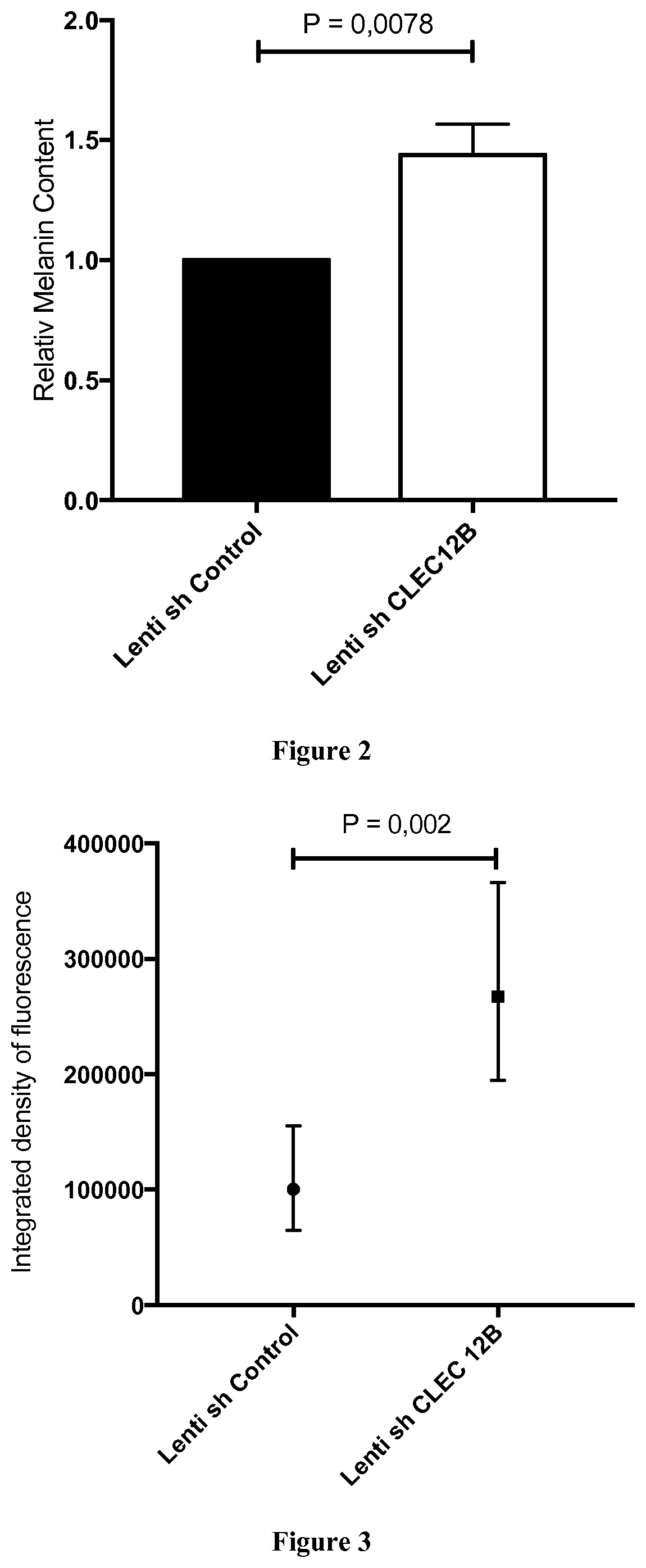Methods and compositions for treating hyperpigmentation disorders
a hyperpigmentation and composition technology, applied in the field of dermatology, can solve problems such as unsatisfactory results
- Summary
- Abstract
- Description
- Claims
- Application Information
AI Technical Summary
Benefits of technology
Problems solved by technology
Method used
Image
Examples
example
Material & Methods
Cell Culture
[0033]Normal human melanocytes (NHMs) and normal human keratinocytes (NHKs) were obtained from the foreskin of young children (skin type III or IV) undergoing circumcision. Tissue samples were kindly supplied by the Department of Pediatric Surgery, Lenval Hospital (Dr. Kurzenne, Nice, France). The samples were washed with phosphate buffered saline (PBS) containing 1% Antibiotic / Antimycotic (Gibco, Life Technologies, USA) 3 times for 5 minutes each. After removal of the subcutaneous tissue, tissue was cut into 2×2 mm2 pieces.
[0034]The foreskin samples were incubated within dispase enzyme (4 U / ml, Roche) for 12-16 h at 4° C. Once the dermis and epidermis of foreskins were separated with forceps, the epidermis was incubated within a trypsin / EDTA solution for 20 minutes at 37° C., the cells dispersed into cell suspensions and filtered by cell strainer (70 μm, Falcon) before final wash with PBS.
[0035]NHMs were isolated in MCDB 153 medium (Sigma Aldrich) supp...
PUM
| Property | Measurement | Unit |
|---|---|---|
| size | aaaaa | aaaaa |
| density | aaaaa | aaaaa |
| molecular weight | aaaaa | aaaaa |
Abstract
Description
Claims
Application Information
 Login to View More
Login to View More - R&D
- Intellectual Property
- Life Sciences
- Materials
- Tech Scout
- Unparalleled Data Quality
- Higher Quality Content
- 60% Fewer Hallucinations
Browse by: Latest US Patents, China's latest patents, Technical Efficacy Thesaurus, Application Domain, Technology Topic, Popular Technical Reports.
© 2025 PatSnap. All rights reserved.Legal|Privacy policy|Modern Slavery Act Transparency Statement|Sitemap|About US| Contact US: help@patsnap.com


